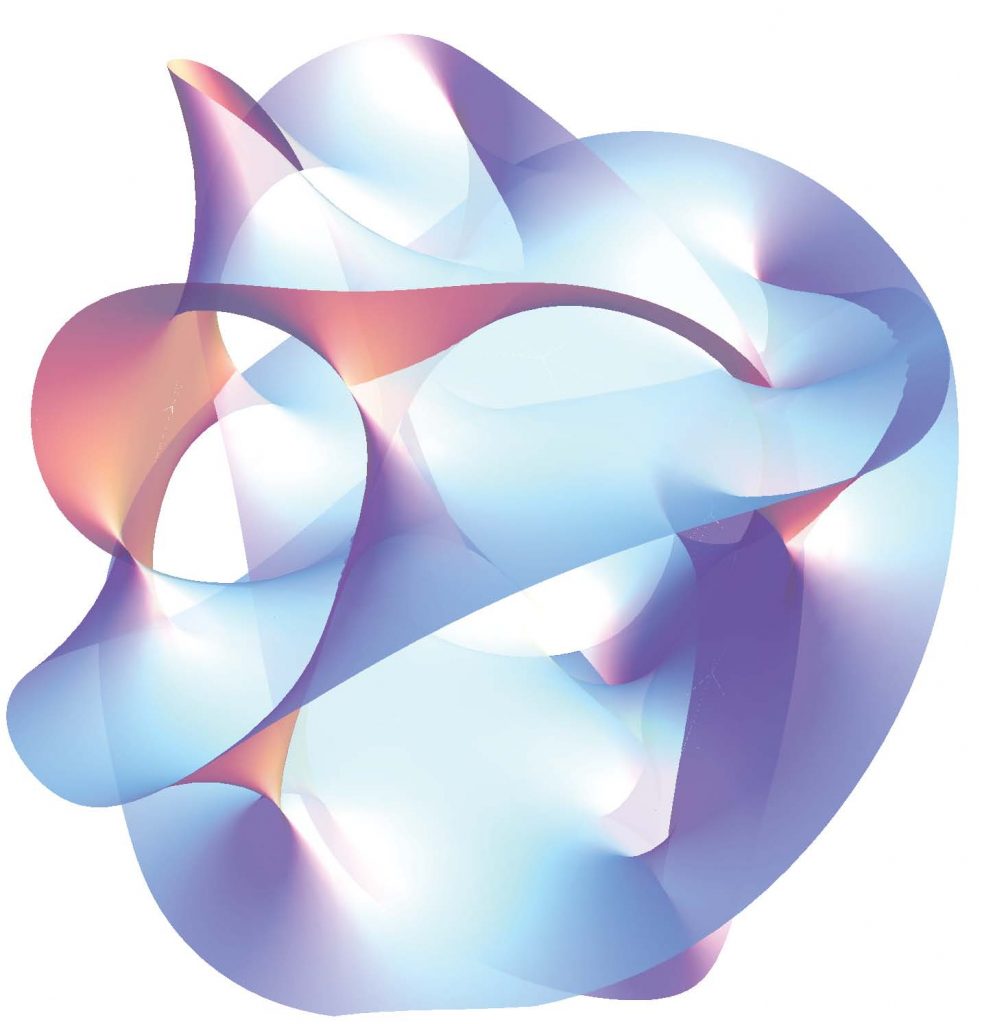And they made their lives bitter with hard service, in mortar and in brick…
Exodus 1:14
On a literal level, the Egyptian exile (Galut Mitzrayim) is a story of the Jewish people’s enslavement in ancient Egypt, where they were forced to do hard labor making mortar and bricks, and building cities for the Pharaoh.

On a deeper level, it is axiomatic in Jewish mysticism that suffering is usually a means to purify and rectify a sinner’s soul in this or past incarnation. It is also axiomatic that any sin damages the sinner’s soul and some supernal spiritual levels that obstruct the flow of the divine benefice into the world, impeding the blessing and, therefore, causing suffering to the sinner.
Technically, it works as follows. When a sin committed below causes damage above, the resulting weakness in some spiritual structure allows the forces of evil, the kelipot (“husks”), to cling to the place of weakness and siphon the divine energy from that place.[1] To prevent evil forces from siphoning off too much life force, there are circuit-breakers built into the system. So, when husks cling to the damaged place of some divine emanation, they are allowed siphon off a bit of extra energy and no more. After all, they are created as parasites and are allowed to carry out their parasitic existence. However, if they take more than they are allowed to take, it triggers circuit-breakers, which cut off the supply of the divine effluence to that place to which the husks cling. Instead of coming down to this world, the divine effluence ascends to its source, which is called a spiritual exile.
According to the Ari,[2] Jews who were enslaved in Egypt were reincarnations of the souls of the generation of dispersion. That generation sinned by attempting to build a tower sky-high—the Tower of Babel—to wage war against G‑d. The Torah says:
And they said one to another: ‘Come, let us make brick, and burn them thoroughly.’ And they had brick for stone, and slime had they for mortar. And they said: ‘Come, let us build us a city, and a tower, with its top in heaven, and let us make us a name; lest we be scattered abroad upon the face of the whole earth.’
Genesis 11:3-4

After G‑d dispersed these people across the earth, their souls, which were lofty souls originating from Adam, were, according to the Ari, reincarnated in the generation of the descendants of Jacob living in Egypt. According to the principle “mida keneged mida” (“measure for measure”), the punishment is not only commensurate with the sin, but also resembles it in some way, so that from the punishment, one can infer the original sin. Just as the people of the generation of the dispersion were using bricks and mortar to build the Tower of Babel, so too, the Jewish people enslaved in Egypt were forced to make bricks and mortar to build cities for Pharaoh. Thus, from the perspective of Lurianic Kabbalah, the Egyptian exile was needed to purify their lofty souls.
As we mentioned above, the Ari teaches that the sin below causes some damage above. In this case, the sin of the generation of dispersion caused the damage to the sefirah of Da’at. Da’at is the source of the partzuf of Ze’ir Anpin (“Lesser Countenance,” the “Small Face,” or Microprosopus). The divine beneficence that flows through Da’at was siphoned off by evil powers (in this case, personified by the Pharaoh). The damage to the supernal Da’at caused the mentality of Ze’ir Anpin to revert to its immature state. The mentality is the three sefirot—Chokhmah, Binah, and Da’at. Partzuf Ze’ir Anpin comprises six “extremities”—six lower sefirot—Chesed, Gevurah, Tiferet, Netzach, Hod, and Yesod.
As Rabbi Chayim Vital writes, at the time of the Egyptian exile, Ze’ir Anpin reverted to its original state, that of “three folded within three.”[3] That means that the triad of sefirot, Chokhmah-Bina-Da’at, is concealed within the triad Chesed-Gevurah-Tiferet, and Chesed-Gevurah-Tiferet triad is concealed within the triad Netzach-Hod-Yesod.[4] The first triad represents intellectual faculties; the second triad represents emotional faculties; and the third triad, which is the only one revealed in this immature state of Ze’ir Anpin, represents the motor faculties. Let us hold this thought and turn now to string theory.
String theory challenged the two prevailing models of elementary particles as point-like particles or fields. Instead, it proposed that elementary particles are energy strings vibrating in space, whose frequencies of vibration correspond to characteristics of elementary particles, such as mass and charge. However, to make the theory work, it turned out that the quantum energy strings must be vibrating in a nine-dimensional space, instead of the familiar to us three-dimensional Euclidian space.[5] Indeed, string theory is formulated in a ten-dimensional space-time with nine spatial dimensions plus time as the tenth dimension (similarly to time being the fourth dimension in the theory of relativity).
The question that immediately comes to mind is, Where are these additional six dimensions of space? Why don’t we see them? The solution physicists came up with is called “compactification.” It means that the additional six dimensions of space are “compactified.” They are curled up on themselves with such a small radius that they cannot be observed. Compactification is a mathematical realization of the Kabbalistic principle, “The end is wedged in the beginning and the beginning in the end.”[6] For example, a power line suspended in the air looks from afar as a one-dimensional line. However, an ant crawling along this wire perceives a two-dimensional surface. If the wire is thin enough, it will look as a one-dimensional line. Its circumference vanishes in the limit, making the additional dimension disappear. In other words, these additional dimensions are hidden; they are not revealed.
What does this have to do with Egypt and the Egyptian exile? Egypt in Hebrew is Mitzrayim. This word is etymologically related to the word mitzarim, that is, “straights.” As expounded by Rabbi Chaim Vital, the seventy people in Jacob’s family entering Egypt is a metaphor for the soul entering the body.[7] The meaning of this allegory is that just as Egypt (Mitzrayim) means straights, the physical body is “straights” for the soul, now limited by the confines of space. This metaphorical comparison of Egypt to space is the link to establishing the parallel implied in the name of this chapter.
Egypt is a place of exile for the Jewish people, just as the body is a place of exile for the soul descending into the physical world. As discussed above, spiritually, this exile manifests itself by Ze’ir Anpin entering the state of immature mentality where “three are folded into three,” that is, two higher triads of sephirot are folded into the lower triad that is the only one that is revealed. In Kabbalah, Ze’ir Anpin is viewed as the spiritual archetype of space. Just as three-dimensional physical space has six directions—up-down, forward-backward, right-left—so too Ze’ir Anpin has six extremities (six sefirot). This connection was already made by the oldest book of Kabbalah, Sefer Yetzirah.[8]
Alternatively, we can say that the triad of the revealed sefirot, Netzach–Hod–Yesod, represents three revealed dimensions of space. If so, the two higher triads, Chokhmah-Binah-Da’at and Chesed-Gevurah-Tiferet, comprise six sefirot, which are “folded” or “compactified” into the revealed triad, represent the six compactified dimensions of space in string theory.[9] Indeed, the words “folded” (or “encompassed”), which are a possible translation of the original word used by the Zohar, klilon, mean the same thing as the term used in string theory, “compactified”—both mean “hidden” or “not revealed.”[10] Together, nine sefirot comprising these three triads are parallel to the nine-dimensional space of string theory.
Upon further examination, this analogy appears even tighter. Indeed, just as in physics, each additional spatial dimension represents an additional degree of freedom, so too in a spiritual domain, every sefirah represents an additional degree of freedom in a conceptual sefirotic space.[11]
To summarize, the Egyptian exile (Galut Mitzrayim) is parallel to the spiritual exile of divine beneficence from Da’at. This, in turn, leads to the return of Partzuf Ze’ir Anpin to the state of immature mentality expressed in “three folding into three.” The concealment of the six higher sefirot in the three lower sefirot is parallel to the compactification of six dimensions in string theory, which is necessary to explain why only three dimensions are revealed.
________________________________
Endnotes:
[1] In Judaism, evil has no independent existence. It is created by G‑d and exists only to provide us, humans, with the freedom of choice. The evil forces, called in Kabbalah, kelipot (“husks” or “shells”), do not get their sustenance directly from G‑d, but are allowed to act as parasites—to siphon off some minute amounts of life force from holiness in order to sustain their existence. Although created to provide us with the freedom of choice, these husks have a vested interest in enticing humans to sin, because when humans sin, it gives the husks additional life force.
[2] Peri Etz Chayim, Sha’ar Hag HaMatzot 1. See Rabbi Moshe Wisnefsky, “Apples From the Orchard: Gleanings From the Mystical Teachings of Rabbi Yitzchak Luria (the Arizal) on the Weekly Torah Portion” (Thirty Seven Books, 2006), pp 249-251.
[3] “Three folded into three” or “three encompassed within three” is the expression used in the Zohar Parshat Beshalach 50a. See also Etz Chaim, Sha’ar HaKlalim, 83 and Bi’urei HaZohar, Beshalach 47.
[4] See Rabbi Moshe Wisnefsky, ibid, p. 254.
[5] Strictly speaking, various versions of string theory are formulated in spaces having different number of dimensions. Bosonic string theory has 26 dimesions. Supersting theory has 10 dimensions. M-theory—a theory that attempts to inify various versions of string theories—has 11 dimensions. We are focusing here on superstring theory that has 10-dimensional space-time, nine of which are spatial dimensions.
[6] A line stretching from plus infinity to minus infinity is not compact. A circle is compact. An open interval is not compact, but the close interval is compact. To compactify an open interval is enough to add to end points. Easier yet, these two end-points could be one, if we simply connect the ends of the interval into a closed circle. This is called compactification. Connecting the end of the interval with the beginning is what Sefer Yetzirah expresses as “The end is wedged in the beginning and the beginning in the end.” See Sefer Yetzirah 1:7.
[7] Sefer HaLikutim and Likutei Torah, Parashat Shemot. See Rabbi Moshe Wisnefsky, ibid, p. 255.
[8] Sefer Yetzirah 1:5; English translation by Rabbi Aryeh Kaplan, Sefer Yetzirah (Samuel Weiser, 1990), p. 44.
[9] In string theory, six extra compactified dimensions form a six-dimensional Calabi–Yau manifold.
[10] In string theory, the compactified extra dimensions close up on themselves to form circles. This is emplied allegorically by another plausible translation of klilon—“encompassed.”
[11] Ten sefirot may be modeled as a five-dimensional space-time with an extra spiritual dimension as in Sefer Yetzirah. Alternatively, ten sefirot may be modeled as a ten-dimensional conceptional space similar to ten-dimensional space-time (nine spatial dimensions plus the tenth dimension of time) as in string theory.
